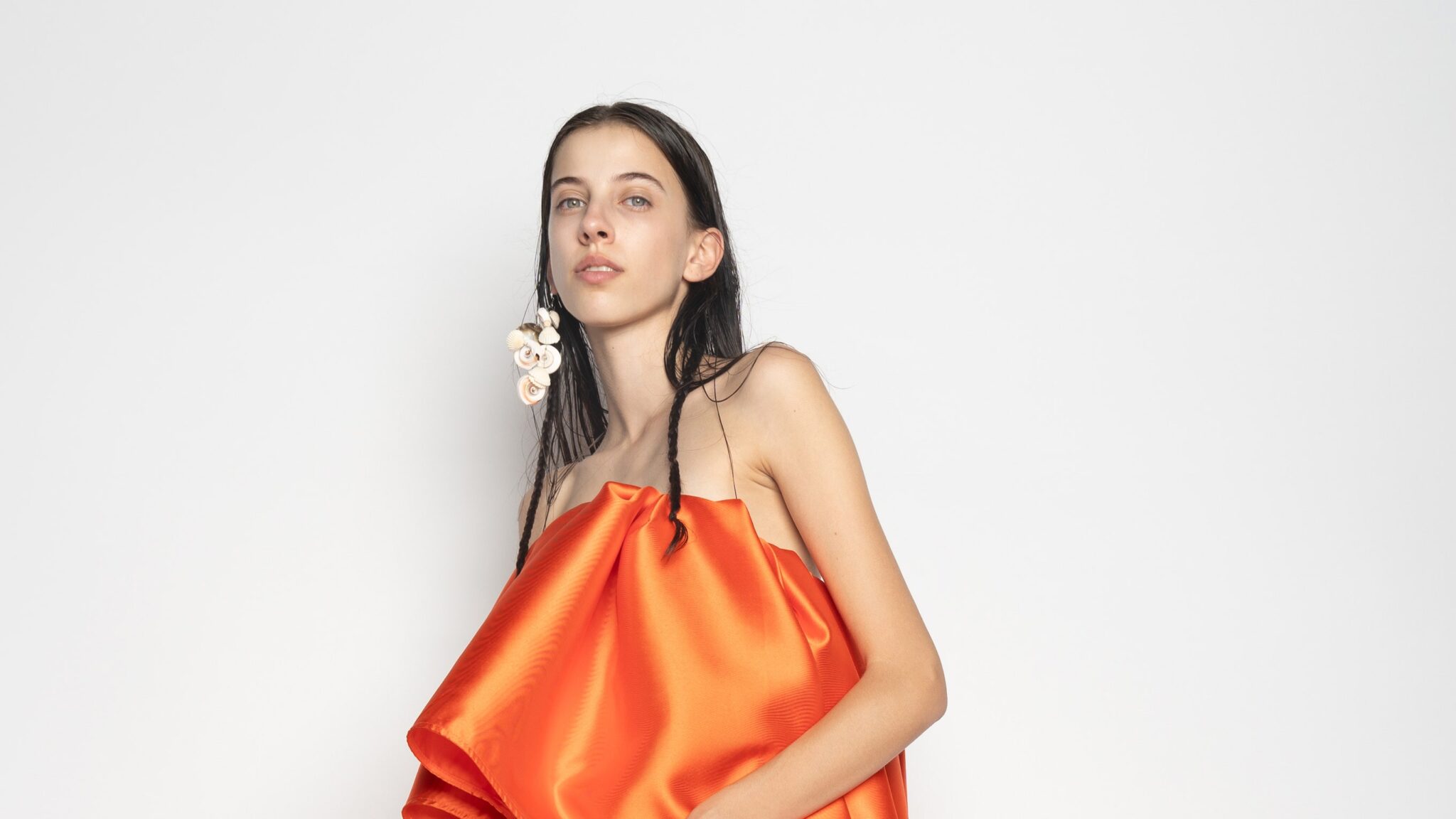Marta Marques and Paulo Almeida were in the spring mood of the 70s. This was a remnant from their resort collection, which was based on the cover of David Bowie’s The man who sold the world record – only here they switched gears and went to Brazil. “We were listening to Maria Bethânia and Gal Costa and Caetano Veloso and all those people – you know it was a scene in Brazil and there’s a sense of liberation and experimentation,” Marques explained during a recent Zoom call. “But specifically we looked at how women in that scene were breaking boundaries; there was no fear, it was all big shapes and big colors. Then, associating Brazil with nature, they eventually mixed that explosive performative energy with the ocean and the beach, leading to… sea creatures. Particularly the creatures of the deep ocean, which glow with the brightest colors against the pitch-black darkness of their surroundings. “At one point everything was a jellyfish to us,” she added.
A close-up of a sea slug became a groovy tie-dye-like print of bright orange and magenta against a lavender background, and a strapless asymmetrical top with ruffled orange mikado from recycled silk had the elegance of a black tie dress, but was paired with acid-wash wide-leg jeans in a matching orange shade. Asymmetrical bustier tops in pale blue or butter yellow denim were dyed with burgundy stains reminiscent of the ink left by octopuses escaping predators (but glamorous). Elsewhere there were airy, open-weave mohair knits and denim pieces with delicate chiffon inserts that revived a sense of movement, while a range of loose tailoring in softly gathered cotton aimed to capture some of the ‘slimness’ of the suits favored by Bethânia at the time. said on stage. It was a loose and elongated silhouette that certainly captured a carefree energy that can only come from living in the tropics.





